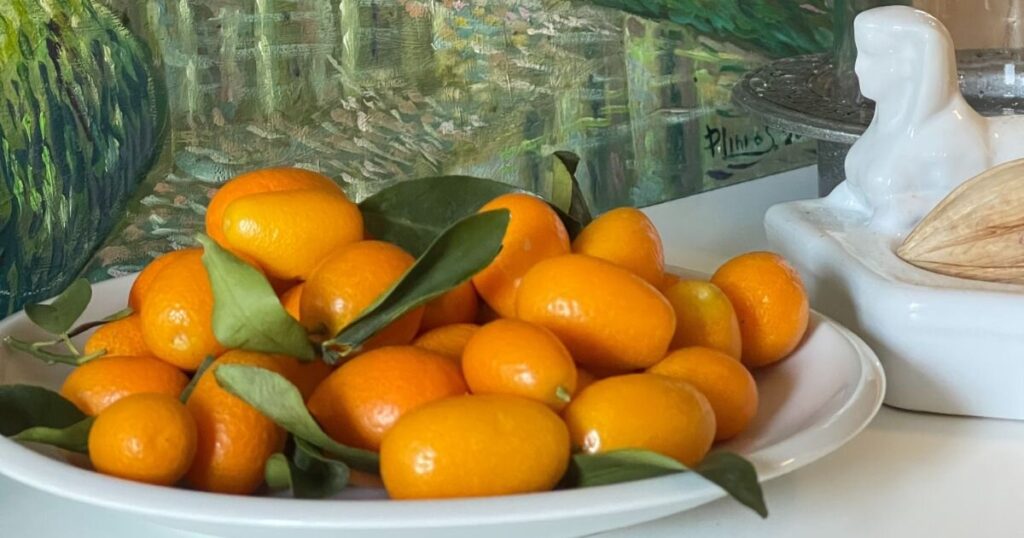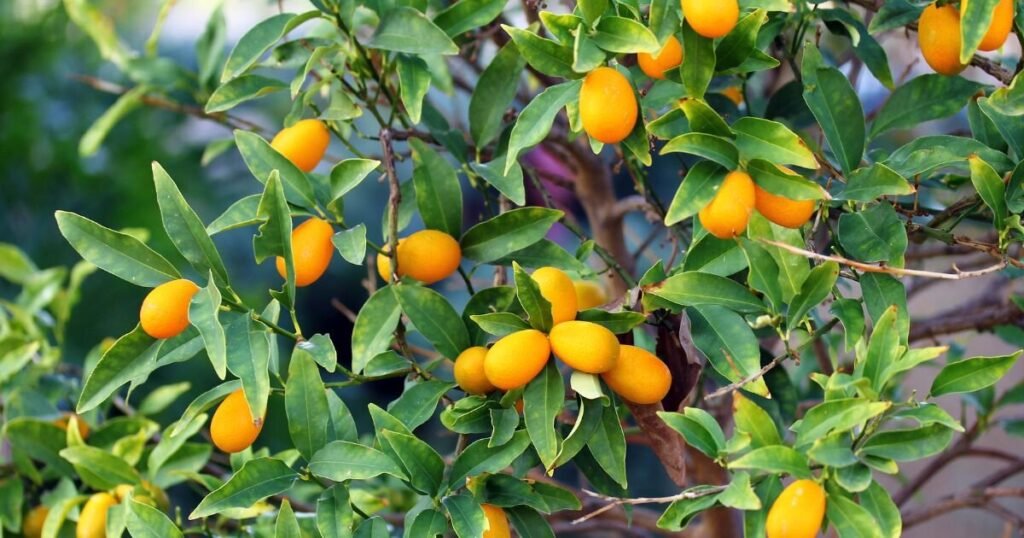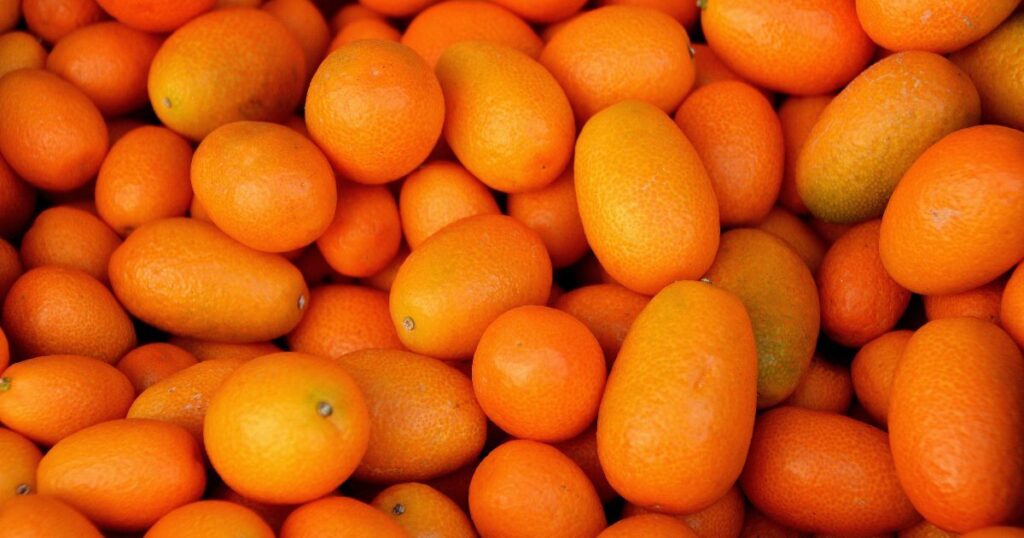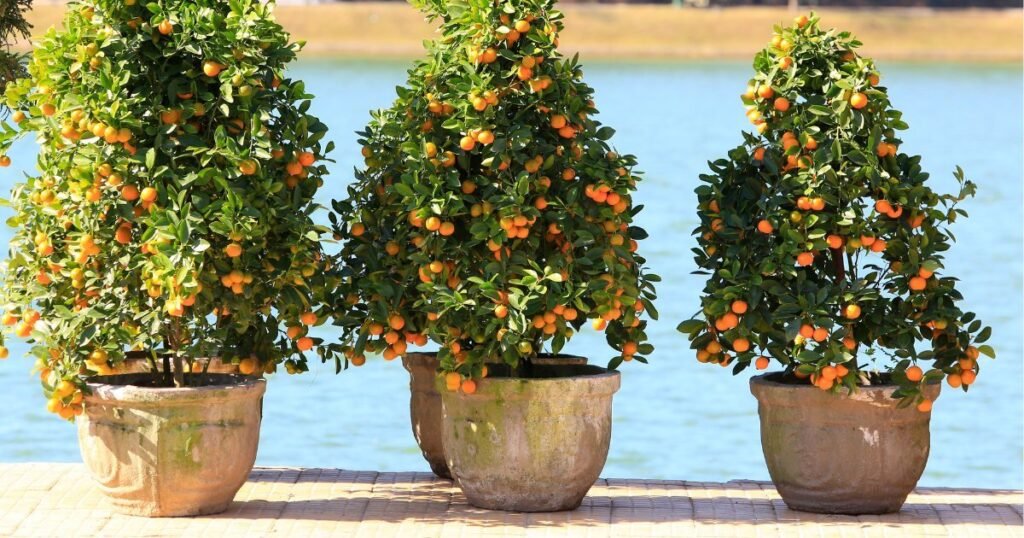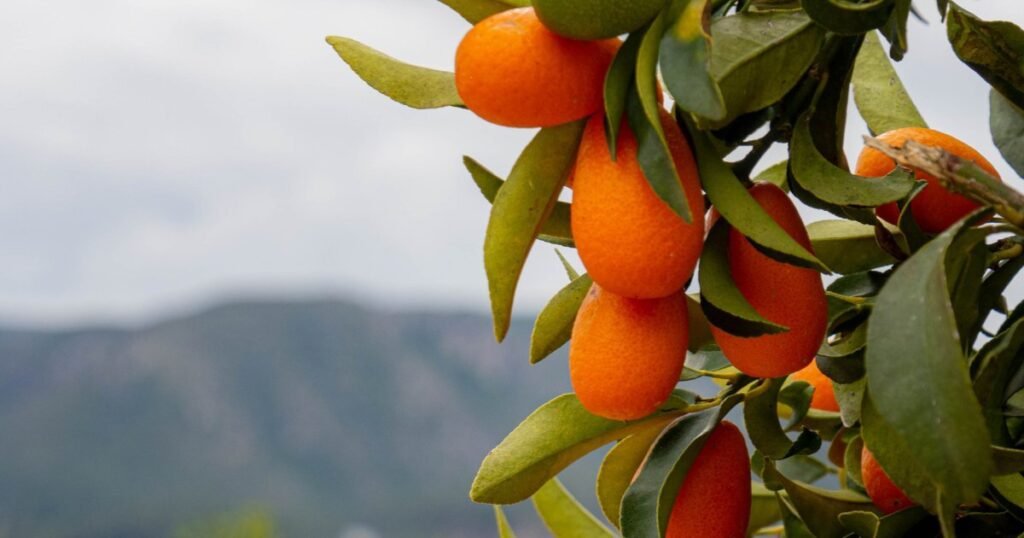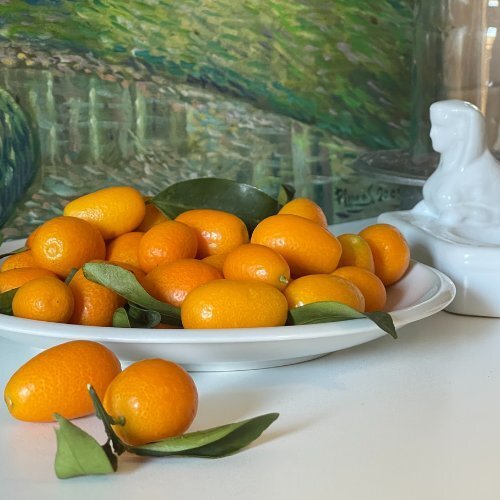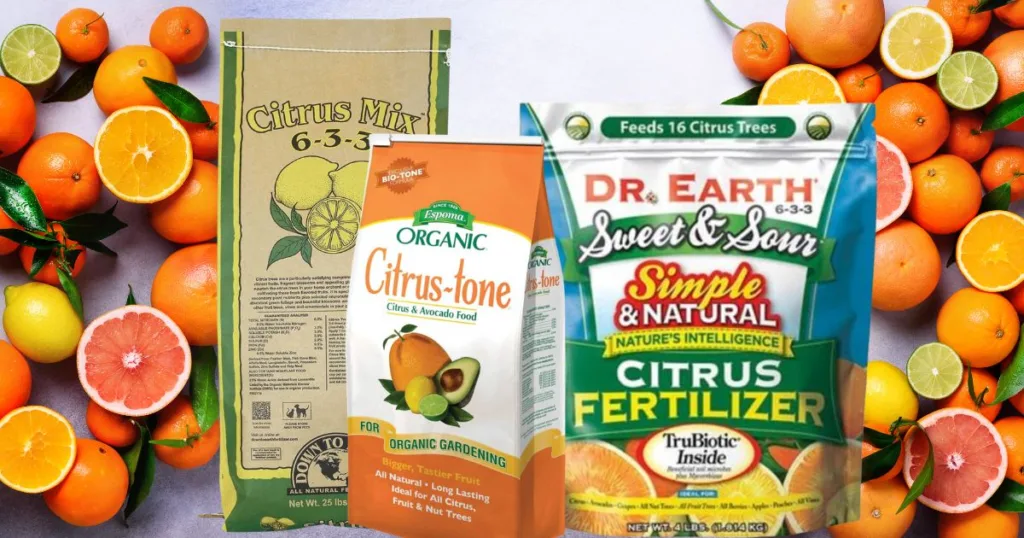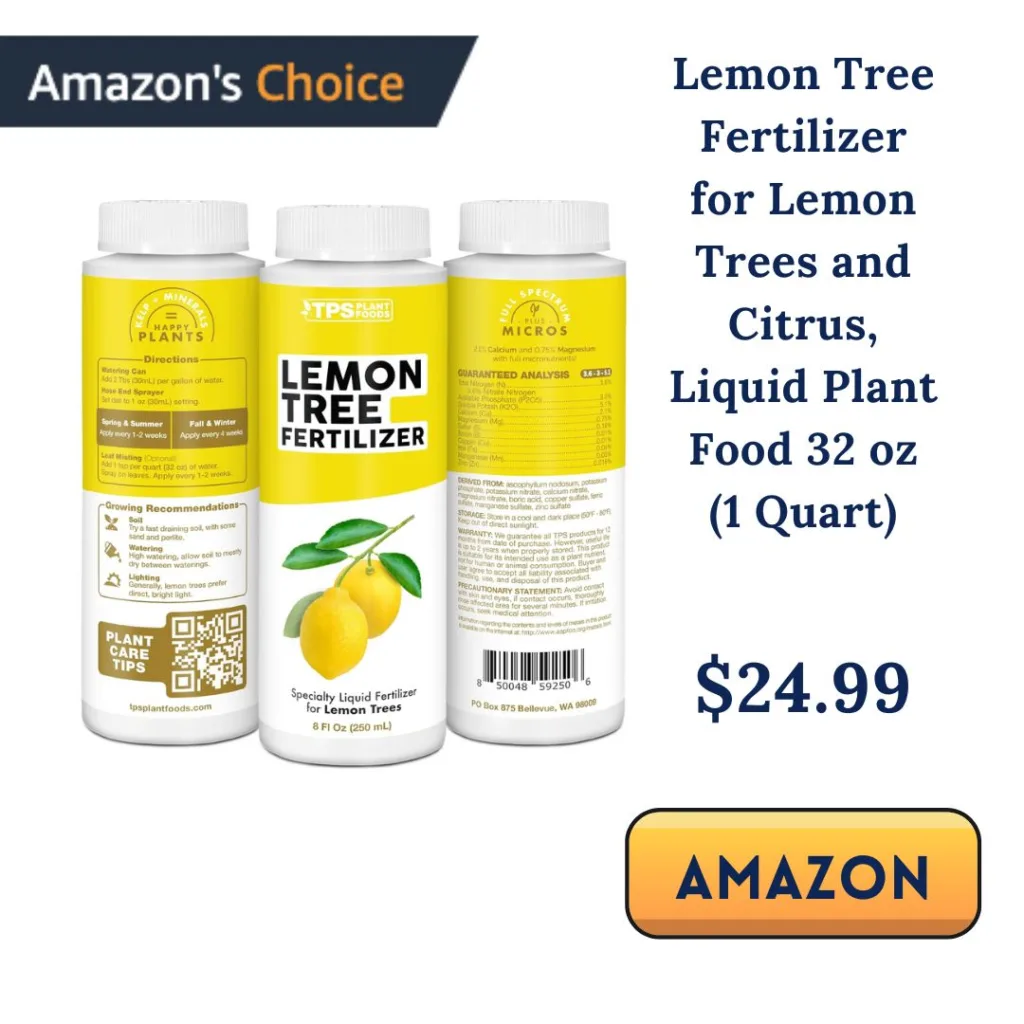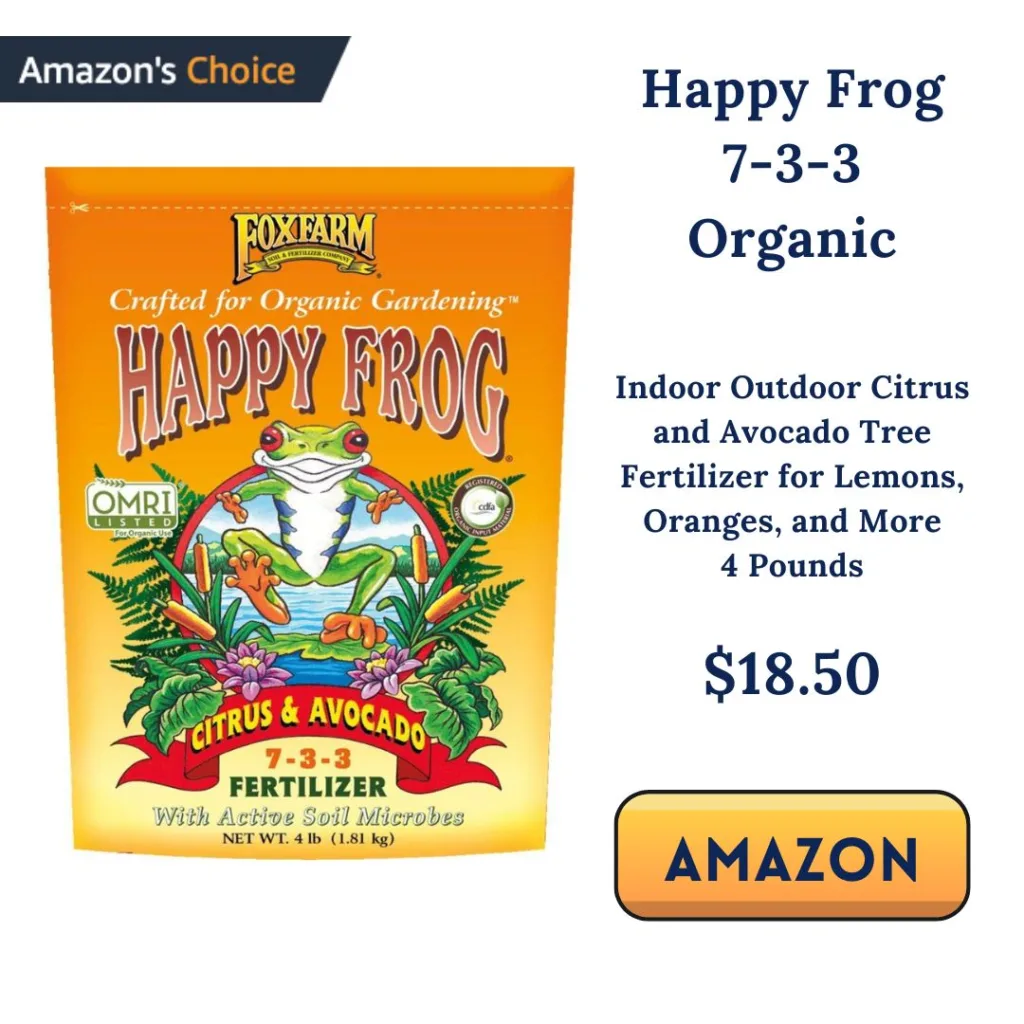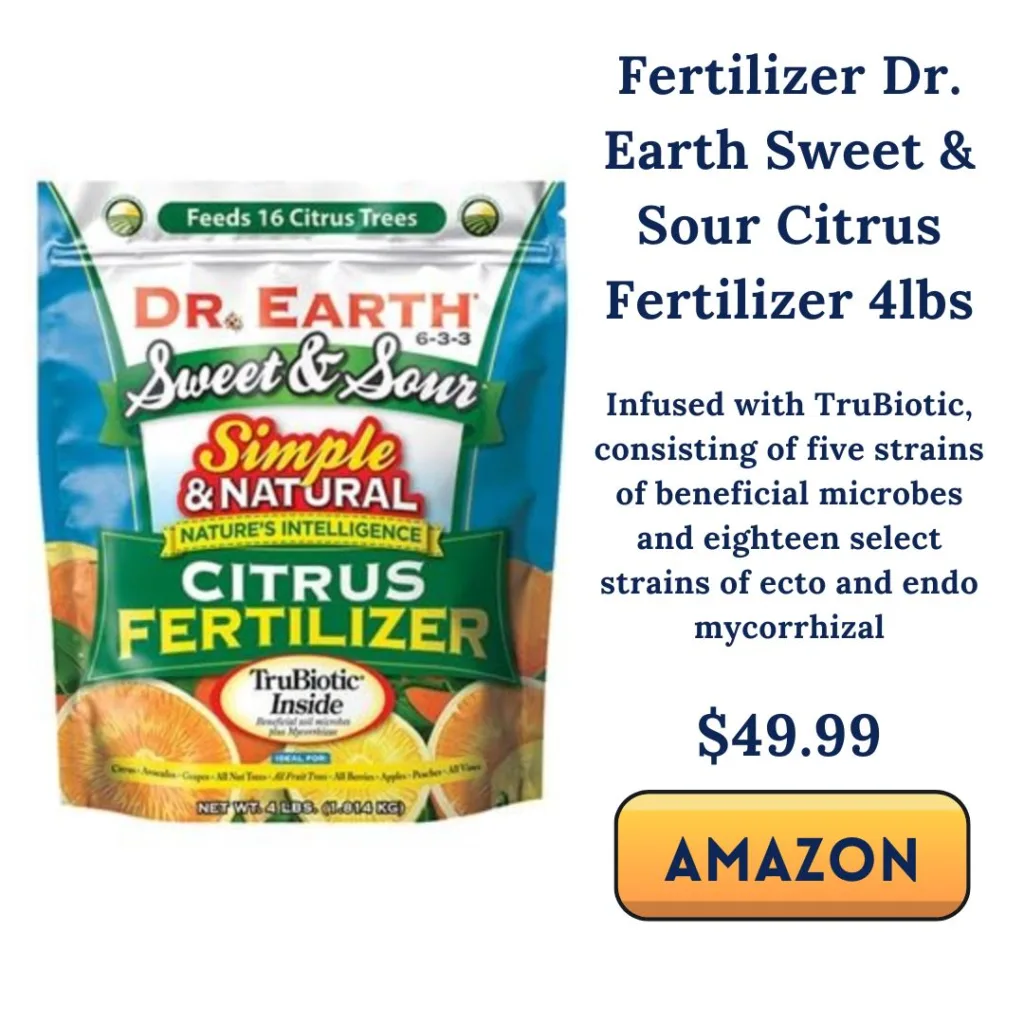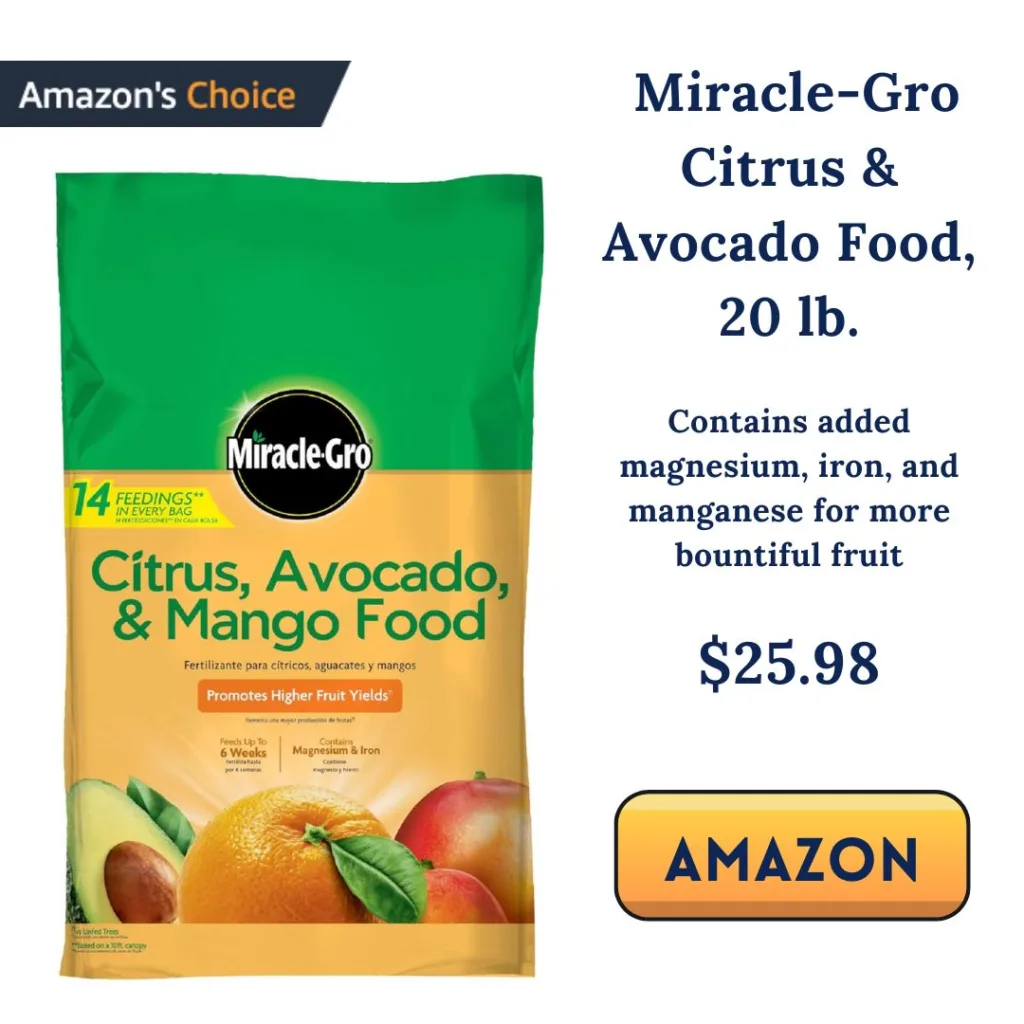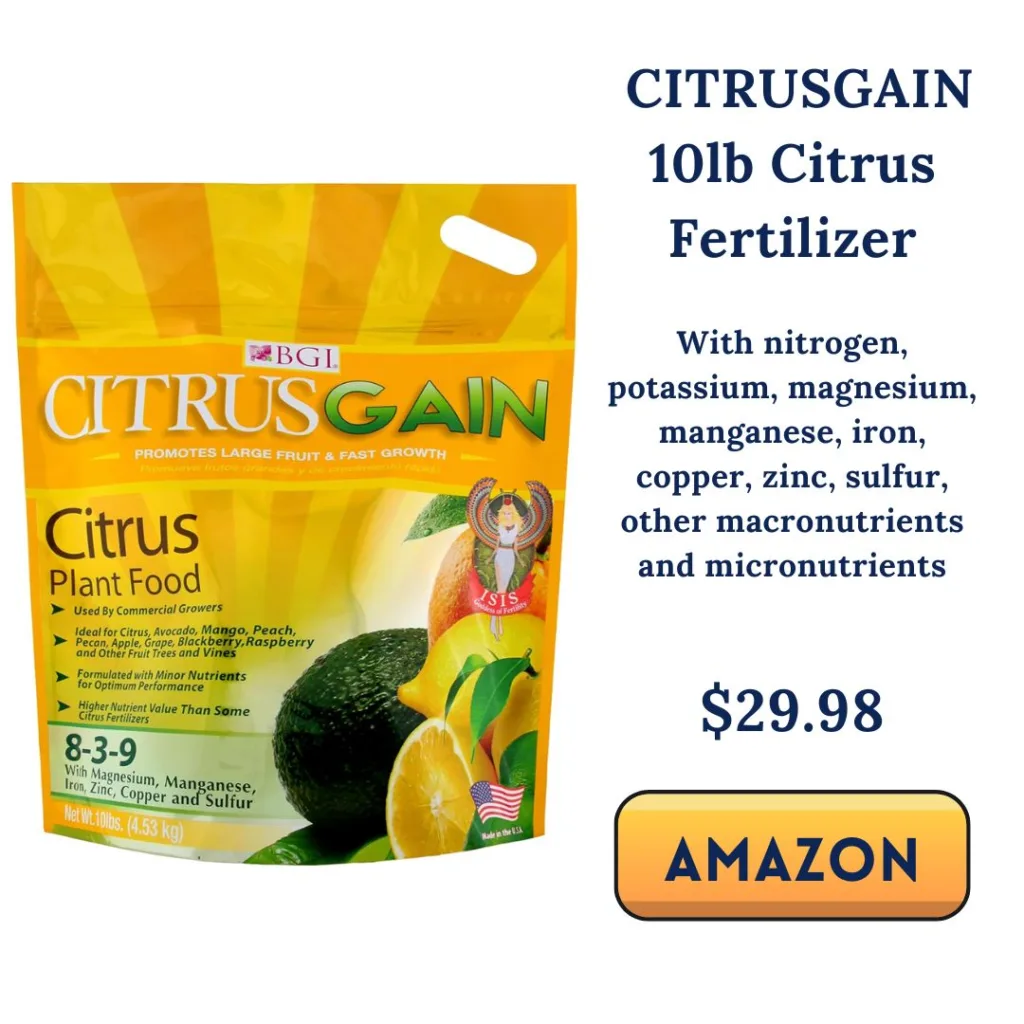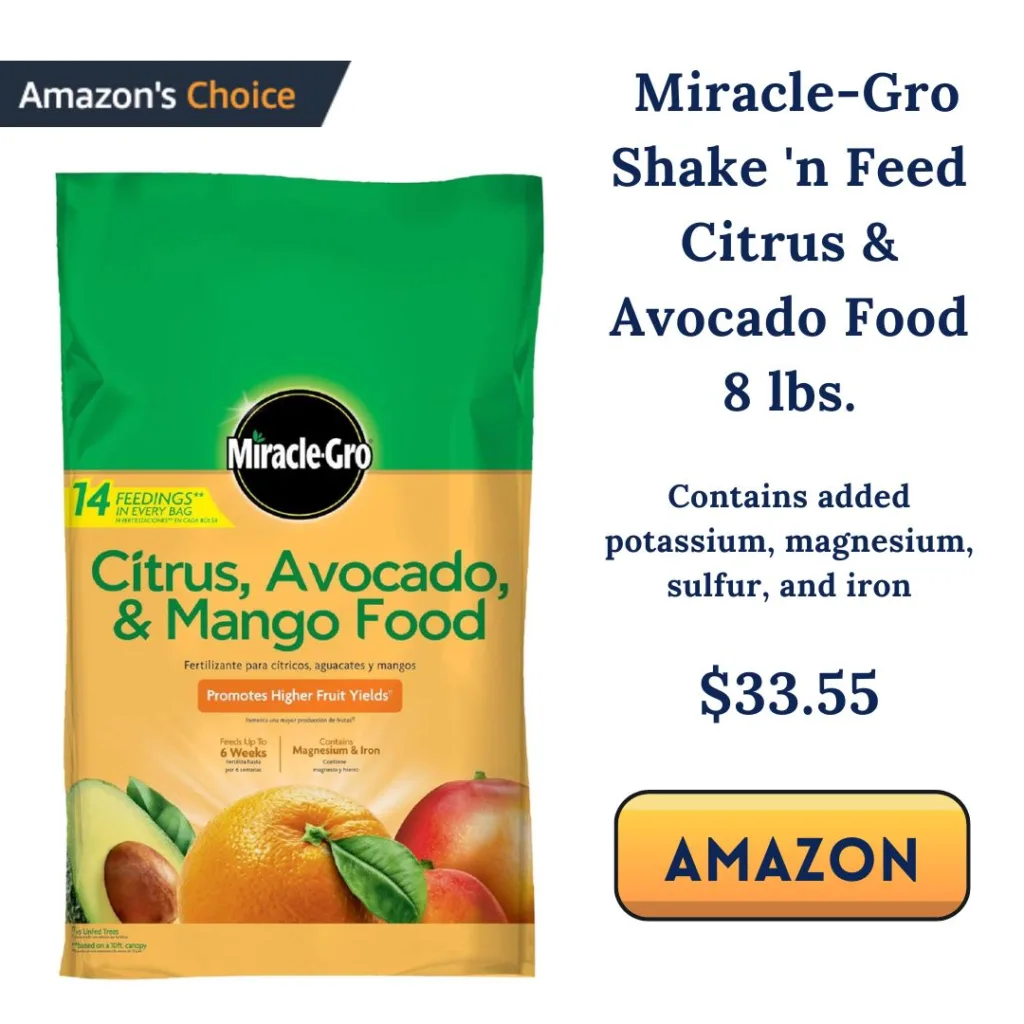Everything You Need To Know About The Lovely Kumquat Tree
Kumquat Trees Are Easy To Grow, Produce Delicious And Nutritious Fruit And Are A Beautiful Addition To Any Home Or Garden - I Have Been Growing These Trees For Years And I Will Share What I've Learned With You

What Are Kumquat Trees?
Kumquats are small citrus fruits, about the size of an olive or a grape, that look like tiny oranges. They have a bright orange color and a sweet peel with a tart interior.
Unlike most citrus fruits, you eat the entire fruit, including the thin peel. The sweetest part of the fruit is the skin, while the flesh provides a tangy contrast.
They have a unique “kumquat taste” that can only be understood by experiencing them yourself.
The contrast between the sweet skin and the tart interior creates a balanced overall flavor.
If you find them too tart, rolling them between your fingers before eating can help release their natural sugars essential oils, and flavors.
These trees are a great addition to home gardens and can thrive in a variety of climates with the right care.
Where Are Kumquat Trees From?
The kumquat tree, scientifically known as Citrus japonica, is native to Southeast Asia and southern China. Kumquats are often associated with the Chinese New Year as a symbol of good luck.
Kumquat trees have a long history dating back to the 12th century in Chinese literature. They were cultivated in China for centuries before spreading to other parts of Asia.
Robert Fortune, a Scottish botanist, introduced kumquat plants to Europe in the 19th century. The trees eventually made their way to North America, where they became a staple among citrus plants.
Where Can You Grow A Kumquat Tree?
Kumquat trees thrive in USDA zones 8-11, and they thrive in the warmest and most mild parts of the United States, particularly in Florida and California.
They need full sun to produce fruit and prefer well-drained soil with good drainage.
These trees can tolerate cooler areas better than other citrus trees, but they may suffer cold damage in freezing temperatures. During the winter months, using a grow light can help maintain new growth if kept indoors.
Planting a new tree requires selecting a proper planting site with sandy soils or well-draining soil. The root ball should be level with the soil line to encourage root growth.
Regular watering is necessary, especially during the first year. The growing season starts in late winter or early spring, with beautiful blooms appearing before fruit production begins.
With proper care, they can be a great addition to home gardens.
What Types Of Kumquat Varieties Are There?
There are different varieties of kumquats. The two most common types are Nagami kumquats and Meiwa kumquats. Nagami kumquats have an oval shape and a tart taste.
Meiwa kumquats are rounder and have a sweet taste with less acidity. If you prefer the sweetest part of the fruit to be more pronounced, Meiwa kumquats are a great choice.
What Are The Health Benefits Of Eating Kumquats?
Kumquats are a rich source of vitamin C, which supports your immune system.
Eating fresh kumquats can help fight off sore throats and colds. They also contain soluble fiber, which supports digestion and heart health.
A 100-gram serving of kumquat provides several grams of fiber and beneficial fatty acids.
The fruit’s antioxidants help combat free radicals, reducing the risk of chronic diseases.
Kumquats have played a role in traditional Chinese medicine. Their natural properties make them beneficial for digestion and overall health.
Some studies suggest they support the immune system and may help fight heart disease. Their high fiber content helps regulate blood sugar, making them a healthy snack choice.
Whether you enjoy them fresh or in recipes, they provide many health benefits.
These golden orange fruits are a great snack and a flavorful addition to your diet.
Eat Kumquats Alone Or Add Them To Other Dishes As An Ingredient Or Garnish
This small citrus fruit is versatile. You can eat it fresh, slice it into salad bowls, or add it to smoothies.
Some kumquat recipes use them in jams, marmalades, or candied treats.
This lovely fruit pairs well with dragon fruit and other tropical flavors.
Organic kumquats are available at farmers’ markets and specialty grocery stores.
If you store them at room temperature, they last a few days, but keeping them in a paper bag in the fridge extends their freshness.
Popular Kumquat Varieties
Several kumquat varieties are available, each with unique characteristics:
Nagami Kumquat Tree – Produces oval-shaped fruit with tart flesh.
Meiwa Kumquat Trees – Known for their sweet peel and milder flavor.
Fukushu Kumquat – Features larger, rounder fruit with a sweeter taste.
Fortunella Crassifolia – A popular choice with a compact size, perfect for small spaces.
Shopping For Fresh Kumquat Fruits
When buying fresh kumquats, look for bright orange fruit with smooth skin. Avoid soft spots, as they indicate overripeness.
This farm in Southern California is well-known for its fresh kumquats sold by the pound.
Remember kumquats are the only citrus fruit you can eat whole. Their small size, sweet peel, and tangy interior make them unique.
Best Places to Order Kumquat Trees
Many retail and wholesale nurseries in the United States offer kumquat trees for sale.
When purchasing, look for a supplier with good customer service and quality citrus plants.
Some of the best places to order include specialized citrus nurseries that ship nationwide.
Choosing a healthy tree with a strong root system ensures better fruit production in the long run. Kumquat trees are an excellent addition to any home garden.
Kumquat Trees: In Conclusion
Growing up in Northern California my earlier memories of eating kumquat fruit was when I was 6 years old picking the fruit from a tree growing in a cut-in-half wine barrel planter. When I was a bit older, I planted one at my family’s walnut ranch.
That tree is now over 15 feet tall and produces more fruit than my family can eat.
Whether you’re in a climate where you can plant a kumquat tree outdoors, or whether you are in a cooler area with cold winter temperatures that require you to move your kumquat into a greenhouse or indoor space to make it through the winter, I highly recommend that you grow these lovely trees.
I predict that your kumquat will become your favorite tree and provide you with years of joy and thousands of beautiful delicious orange oval fruits packed full of flavor and vitamin C.
If this article inspires you to grow your own kumquat tree, please send me an email and let me know how your experience goes.
My email: contact@nathanheinrich.com
Best Fertilizers For Kumquat Trees?
What Is The Best Organic Fertilizer For Kumquat Trees?
There are a number of different types of fertilizer options for kumquat trees. I personally prefer natural lemon tree fertilizers, in other words, organic options.
These are my favorite organic citrus fertilizer brands and formulations.
Using these fantastic organic fertilizers you will have the best results and avoid nutrient deficiencies which can lead to yellowing citrus leaves and tasteless citrus fruits.
I’ve included both granular fertilizer and liquid fertilizer options for your ease of use and personal preference.
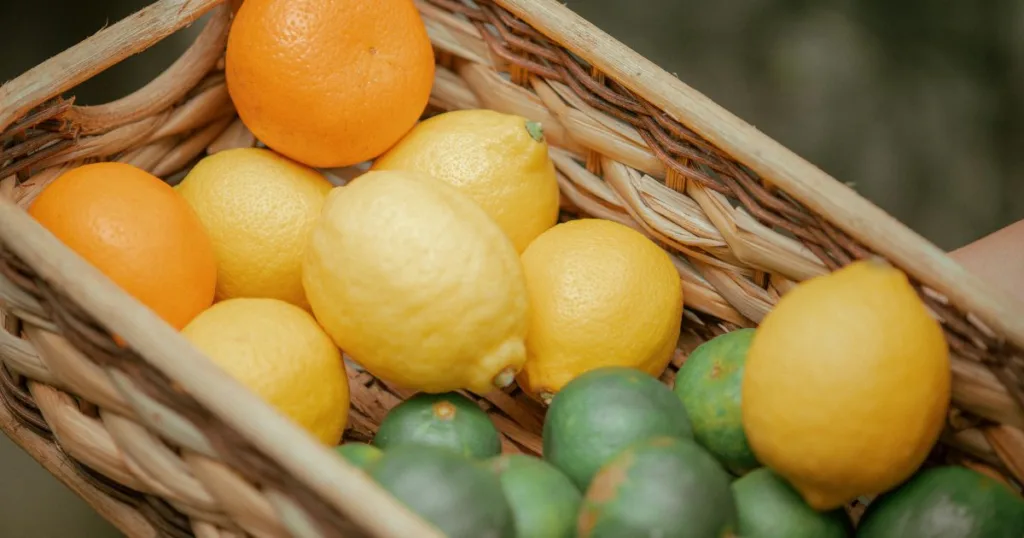
What Synthetic Fertilizers Are Best For Kumquat And Citrus Fruit Trees?
If you’re not interested in using organic fertilizer for your kumquat trees, there are a number of slow-release and granular fertilizer options that will deliver the best results when you follow the label directions.
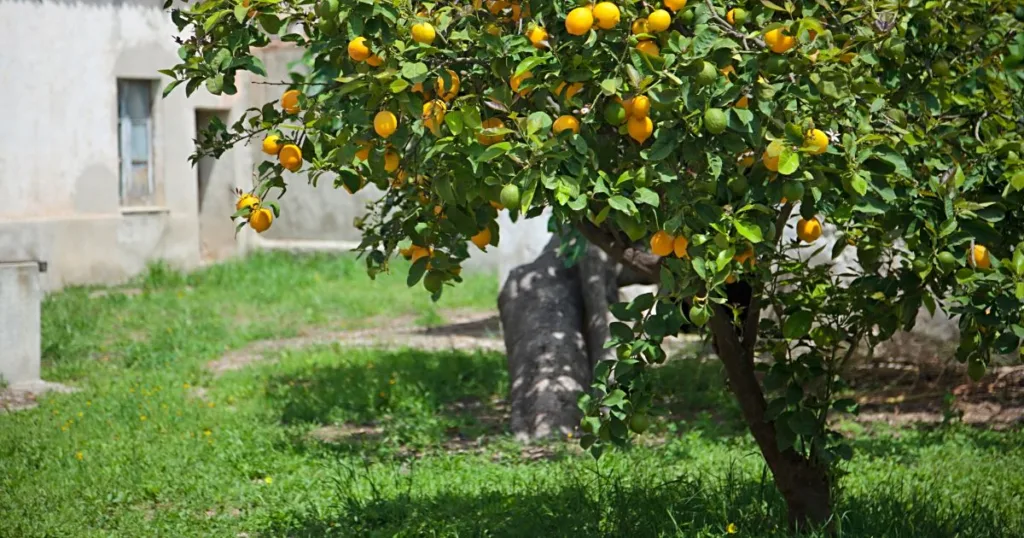
How Much Fertilizer Should You Feed Your Kumquat Tree?
For Kumquat Trees Planted In The Ground
There’s a simple formula to follow when trying to decide the amount of fertilizer to use for your kumquat tree. For each year-old a citrus tree is, add a pound of fertilizer. Then divide that amount by how many times you will be fertilizing.
If you have a citrus tree that is 10 years old you will need a total of 10 lbs of lemon tree fertilizer for the whole year.
But rather than dumping 10 lbs of fertilizer on your lemon tree, all at once, you need to spread your feedings out over time.
So if you feed three times a year you would give your citrus tree a little over 3 lbs per feeding.
If you feed 5 times per year you would give your kumquat tree 2 lbs of fertilizer with each feeding.
Refer to the fertilizer package for the specific directions.
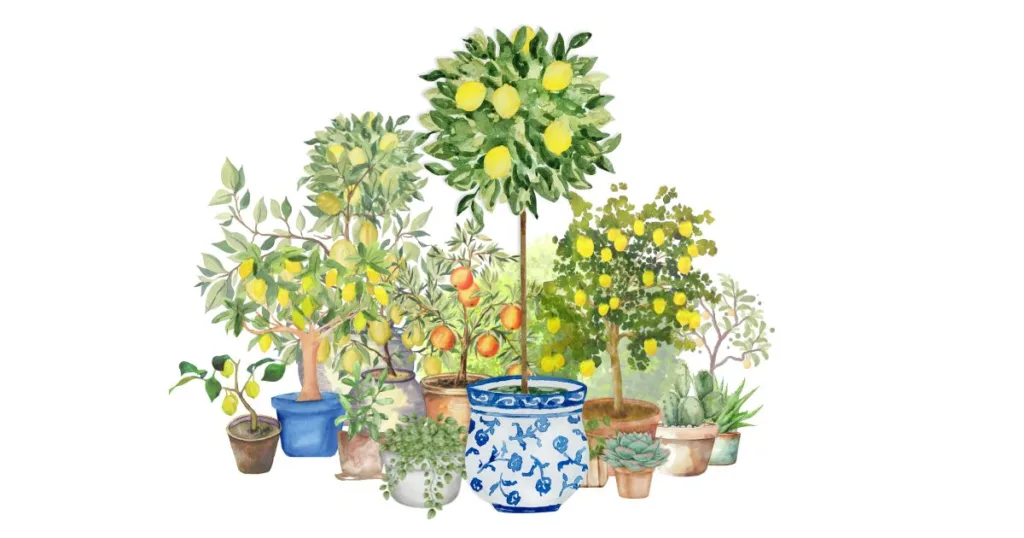
The Best Fertilizer For Potted Kumquat Trees
Because kumquat trees planted in pots have a very limited amount of soil, you must use a different method when fertilizing them.
My favorite method for fertilizing kumquat trees in pots is to use an organic water-soluble fertilizer once a month during the growing season.
These are some of my favorite liquid organic fertilizers that are perfect for feeding kumquat trees – be sure to read the fertilizer label to make sure you’re using the right amount of liquid for the best nutrient availability and soil health.
If the label doesn’t give any guidelines for fertilizing citrus trees in pots, use half of the recommended amount so that you don’t over-feed your potted citrus.
*Remember to follow the same directions for when to feed that and how often that we mentioned above.
What Goes Into The Best Lemon Tree Fertilizer?
As kumquat trees, and all citrus trees, are rather heavy feeders they need regular feedings.
But as important as regular feedings are, even more important is using a balanced fertilizer with the proper NPK ratio and trace elements. NPK (nitrogen, phosphorus, and potassium) are the major essential nutrients.
A balanced n-p-k ratio fertilizer will have equal parts nitrogen to phosphorus, and potassium.
The best fertilizers will have the proper nutrition balance without too much nitrogen.

Kumquat Trees Need More Than Just NPK, They Also Need Micronutrients
These are some of the essential trace minerals that kumquat trees need in trace amounts to avoid nutrient deficiencies.
Manganese (Mn)
Manganese is an essential element required for the photosynthesis process. When a citrus tree is deficient in manganese a yellowing of the leaves can occur.
Zinc (Zn)
For any citrus to be a thriving healthy tree it will need proper amounts of zinc.
If your tree is deficient in zinc, its growth may become permanently stunted.
You can cure a zinc deficiency with zinc sulfate or chelated zinc.
Iron (Fe)
If your kumquat or citrus leaves have started to turn yellow but the veins of the leaves are still green, you don’t need a soil analysis, you very likely have an iron deficiency.
Many of the best kumquat tree fertilizer brands and formulations will include iron, but if they don’t you can always add iron chelates or another type of iron supplement.
Some gardeners actually use rusty iron metal in the soil of their citrus trees to cure iron deficiencies and yellow leaves.
Copper (Cu)
Copper is essential in enzymatic reactions in kumquat trees.
If your lemon tree needs copper you can be treated with copper-based fungicide or copper sulfate.
Boron (B)
Boron is essential for flower and fruit development and cell wall formation.
When a citrus tree has a boron deficiency can cause fruit to become deformed and tasteless.
Make sure your kumquat tree fertilizer has boron in it to avoid a deficiency.
Some of the best citrus tree fertilizer brands have all the required trace elements

Want to read more about Mediterranean gardening and the Mediterranean Diet?

Italian Summer – Fruit, Books, Heatwave & The Alpini Most Of Europe And Italy Have Been Experiencing An Extended Heat Wave, Summer Fruit And Produce

Who Are The Alpini: Italy’s Longest Serving Mountain Military Troops If You’ve Ever Seen Men Of A Certain Age In Northern Italy Wearing These Wool

7 Unexpected Weeks Of Life The Past Month And A Half Was One Of The Most Surprising, Heartbreaking & Beautiful Of My Life – It
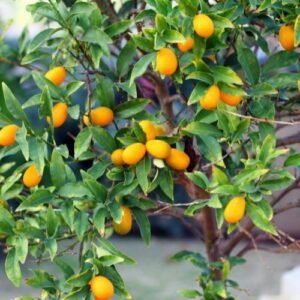
Kumquats are small citrus fruits, about the size of an olive or a grape, that look like tiny oranges.
They have a bright orange

“What will happen to Italy when the last of these members of the Greatest Generation are gone?”, I wonder. I fear their stabilizing force and

Top Reasons To Visit Italy in 2025 2025, And The Rest Of The Decade, Is Shaping Up To Be The Best Time, In Nearly A
Disclosure:
Here at All Roads Lead To Italy, we only recommend products we would use ourselves and all opinions expressed here are our own.
This post may contain affiliate links with potential savings at no additional cost to you.
In some cases, we may earn a small commission.
Information in this article have in part been sourced from studies from the University of California,
Read our privacy policy for full details.

Dreaming of Moving to Italy?🇮🇹 - Get this FREE podcast & be INSPIRED by someone who moved from New York to Italy in 2020!
*By signing up for this Podcast you’ll also be joining our mailing list through which we will keep you up to date on all things Italian! We never sell your information and you can easily unsubscribe at any time.
Share This Post
Author Info:

Nathan Heinrich
Nathan is a writer, designer & horticulturist. He is the founder and Editor-in-Chief of "All Roads Lead to Italy" Magazine & host of the Top-10 Travel Podcast, "I'm Moving To Italy!". Nathan was born and raised in a 6th generation farming family in Northern California, he is currently, a dual Italian citizen, living in the Prosecco Valley of Northern Italy, near Venice.

